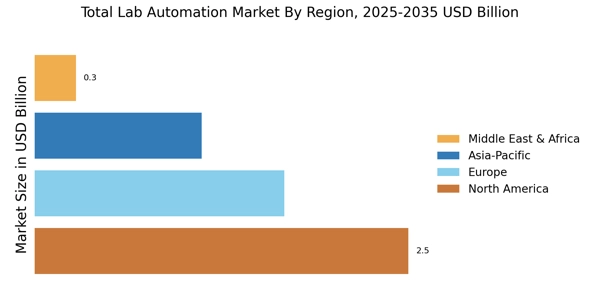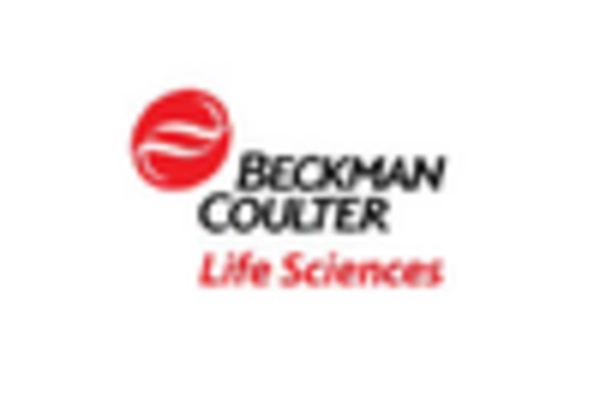Rising Demand for Efficiency
The Total Lab Automation Market experiences a notable surge in demand for efficiency across laboratory operations. Laboratories are increasingly seeking solutions that minimize human error and enhance throughput. Automation technologies streamline workflows, allowing for faster sample processing and analysis. According to recent data, laboratories that implement automation can achieve up to a 50% increase in productivity. This trend is driven by the need for laboratories to handle growing sample volumes while maintaining accuracy and reliability. As a result, the Total Lab Automation Market is witnessing a shift towards integrated systems that facilitate seamless data management and operational efficiency.
Advancements in Robotics and AI
Technological advancements in robotics and artificial intelligence are significantly influencing the Total Lab Automation Market. The integration of AI algorithms into laboratory automation systems enhances decision-making processes and optimizes resource allocation. Robotics technology enables precise handling of samples, reducing the risk of contamination and improving reproducibility. The market is projected to grow as laboratories adopt these advanced technologies to remain competitive. In fact, the automation segment is expected to account for a substantial share of the market, driven by innovations that enhance laboratory capabilities and operational efficiency.
Increasing Focus on Quality Control
Quality control remains a paramount concern within the Total Lab Automation Market. Laboratories are under constant pressure to deliver accurate and reliable results, which necessitates the implementation of robust automation solutions. Automated systems facilitate real-time monitoring and validation of processes, ensuring compliance with regulatory standards. The demand for quality assurance is expected to propel the market forward, as laboratories invest in technologies that enhance their quality control measures. This focus on quality is likely to drive the adoption of automated solutions that provide traceability and documentation, essential for maintaining laboratory accreditation.
Regulatory Compliance and Standardization
Regulatory compliance and standardization are essential factors influencing the Total Lab Automation Market. Laboratories must adhere to stringent regulations to ensure the safety and efficacy of their processes. Automation solutions that facilitate compliance with these regulations are in high demand. The market is witnessing a trend towards the development of automated systems that incorporate features for documentation, traceability, and validation. As regulatory bodies continue to evolve their standards, laboratories are likely to invest in automation technologies that help them meet these requirements efficiently. This focus on compliance is expected to drive the growth of the Total Lab Automation Market.
Growing Investment in Research and Development
Investment in research and development is a critical driver for the Total Lab Automation Market. As scientific research becomes increasingly complex, laboratories are allocating more resources to develop innovative automation solutions. This trend is evident in sectors such as pharmaceuticals and biotechnology, where the need for high-throughput screening and data analysis is paramount. The market is likely to benefit from increased funding for R&D initiatives, which aim to create cutting-edge automation technologies. This investment not only enhances laboratory capabilities but also fosters collaboration between technology providers and research institutions, further propelling market growth.


















Leave a Comment